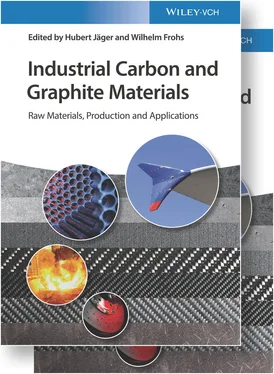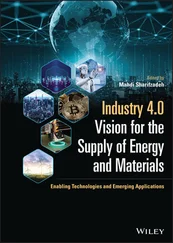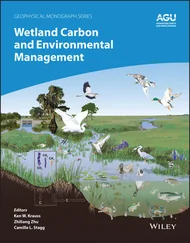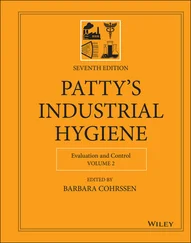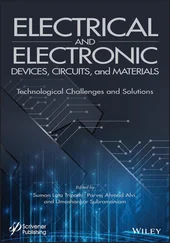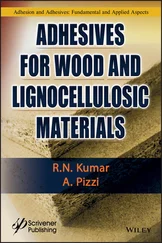15 15 Predel, H. (1992). Theoretical and practical methods for coke yield calculations and optimisation. In: Light Metals 1992, 601–609. San Diego, CA: TMS.
16 16 Liebermann, N. (1985). Troubleshooting in Process Operations, 16–26. Metairie, LA: Pen Well Publishing Comp.
17 17 Predel, H. (1992). New developments in delayed coker operations. Carbon Conference (22–26 June 1992). Essen.
18 18 Stefani, A. (1996). Debottleneck delayed cokers for greater profitability. Hydrocarbon Process. 6: 99–103.
19 19 Mobil Oil Corporation (1978). Conversion of solid wastes to fuel coke and gasoline. US 4,118,281 (T.‐Y. Yan).
20 20 Elliott, J.D. and Klick, R. (1994). Trends in delayed coker design. Hydrocarbon Technol. Int. J. 71 (1) Summer): 17–23.
21 21 Elliott, J.D. (1993). Latest coker designs increase liquid yields, reduce emissions. Oil Gas J. 91: 14–20.
22 22 Elliott, J.D. (1992). Maximize distillate liquid products. Hydrocarbon Process. 71 (1): 79–84.
23 23 NPRA (National Petroleum Refiners Association) (1994). Refiners exchange experiences on FCC problems, coking operations. Oil Gas J. 92: 110–115.
24 24 Parrish, M.R., Hammond, D.G., and Citarella, V.A. (1996). Fluid coking: a continuous, flexible and reliable conversion process. Hydrocarbon Technol. Int. J. Spring: 25–31.
25 25 Diff. autors (1996). Refining 1996, Hydrocarbon Process. 75 Special Edition, November 100.
26 26 Predel, H. (1996). Steps for green coke calcination‐mathematic model and practical tests and experiences. In: Light Metals 1996, 499–507. Los Angeles, CA: TMS.
27 27 Fischer, W.K., Collin, G., and Stadelhofer, J.W. (1990). Technischer Kohlenstoff—Herstellung und Anwendung. DGMK‐Haupttagung, Essen, September 1921, 423.
28 28 Mochida, J., Fujimoto, K., and Oyama, T. (1997). Chemistry in the production and utilization of needle coke. In: Chemistry and Physics of Carbon, vol. 25 (ed. P.A. Thore), 111–212. New York, NY, Basel, Hongkong: Marcel Dekker.
29 29 Predel, H. (2005). Erdöl Erdgas Kohle 121: 348–352, Petroleum Koks‐Entwicklung und Tendenzen H.Predel, OIL GAS European Magazine, 4 (2008) 2004–205,Commercial Incentive for the Production of High Quality Petroleum Coke Calcinate H.Predel, OIL GAS European Magazine, 2 (2013). 98–100, Important Steps for Production of High‐Quality Petroleum Coke Calcinate.
30 30 Karlsruher Institut für Technology (2009). Presseinformation Nr.143, Dez. 2009.
31 31 Roskill Information Services (2005). Petroleum Coke Market Research. Global Information, Inc.
32 32 International Aluminium Institute (2005). Statistical Report, London.
33 33 Edwards, L., Backhouse, N., Darmstadt, H., and Dion, M.‐J. (2012). Evolution of anode grade coke quality. In: Ligth Metals 2012, 35–39. Las Vegas, NV.
34 34 Adams, R., Frohs, W., Jäger, H., and Roussel, K. (2007). Graphite and Needle Coke Development. Conoco Phillips, SGL Group. http://www.asc.omnibooks.
35 35 Halim, H., Im, J., and Lee, C. (2013). Preparation of needle coke from petroleum by‐products. Carbon Lett. 14 (3): 152–161.
36 36 SGL Group (2012). Investor Relations Presentation.
37 37 Global and China Needle Coke, Industry Report 2012–2015, Research in China.
38 38 Blumberg, H. (1997). Fibers for composites status quo and trends. Chem. Fibers Int. 47: 36–41.
39 39 Jonville, C., Thomas, J.C., and Dreyer, C. (1995). The influence of coke source on anode performance. JOM 47: 23–24.
40 40 Hume, S.M., Fischer, W.K., Perruchoud, R.C., and Welch, B. (1993). A model for petroleum coke reactivity. In: Light Metals 1993, 525–534. San Diego, CA: TMS.
41 41 Keller, F. and Mannweiler, U. (1995). Anode Performance: The Link between Coke Properties and Aluminum Production Cost. PACE, Petroleum Coke Quarterly.
42 42 Conoco Inc. Method for producing Premium Coke from residual coke. US Patent 4,235,703, 1980.
43 43 Jieming, X., Guo, F., Miglan, G., and Yanging, Z. (2012). Preparation on high quality needle coke from FCC decant oil. In: International Conference on Solid State and Materials, Lecture Notes in Information Technology, vol. 22.
44 44 Kalincheva, L., Zaporin, V., and Knatmullin, I. (1996). Influence of coker feed properties on quality of graphitized electrodes. Chem. Technol. Fuels Oils 32 (2): 80–81.
45 45 Meier, M.W. (1996). Cracking Behavior of Anodes. Sierre: R+D Carbon Ltd.
1 Escallon, M. (2011). Petroleum and Petroleum/Coal Blends as Feedstocks, paperback‐book.
2 Fahim, M.A., Alsahhaf, T.A., and Elkilani, A.S. (2010). Fundamentals of Petroleum Refining. Amsterdam: Elsevier.
3 Hsu, C.S. and Robin, P.R. (2006). Practical Advances in Petroleum Processing. New York, NY: Springer.
4 Qahtani, K.Y.A. and Elkamel, A. (2010). Planning and Integration of Refinery and Petrochemical Operations. Weinheim: Wiley‐VCH.
5 Speight, J.G. (2000). Petroleum refinery processes. In: Kirk Othmer Encyclopedia of Chemical Technology, 5e. Hoboken, NJ: Wiley.
1 *A previous version of this article has been published in Ullmann’s Encyclopedia of Industrial Chemistry.
6.1.3 Coal-Tar Pitch Coke
Tetsusei Fukuda
C‐Chem Co. Ltd, Tokyo, Japan
Pitch coke (hereinafter referred to as PC) is a blocky, granular, and powdery, black carbonaceous substance with maximum diameter of approximately 30 mm and with pores or cracks visible to naked eyes as manufactured by the carbonization at temperature equal to or higher than approximately 450 °C of coal‐tar pitch as a raw material withdrawn from the bottom of a distillation column in which coal tar described in Section 6.1.5.3.4 is distilled. PC contains nearly free of ash. This is a big difference from similar carbonaceous metallurgical coke for iron making manufactured by dry distillation of a coal.
Electrolytic smelting of aluminum and electrolysis of aqueous sodium chloride have been used in an industrial scale from the late nineteenth century to the early twentieth century, and the importance of the high purity of the carbon electrode is recognized. Consequently, manufacture of PC nearly free of ash using coal‐tar pitch as a raw material instead of metallurgical coke using a coal as a raw material has started. In the early stage retorts and pot still were used, but the Koppers process has been developed and established by the Koppers Company in Germany in the 1930s and is still used at present in Eastern Europe and China.
Nippon Steel Chemical Industry Co., Ltd. (at present, Nippon Steel & Sumikin Chemical Industry Co., Ltd.) has thereafter used in 1968 the licensing technology from the Lummus Co. in the United States to establish a production process by delayed coking [1], and this process is at present used to manufacture PC in Japan and China. Nippon Steel Chemical Co., Ltd. (at present, Nippon Steel & Sumikin Chemical Industry Co., Ltd.) [2, 3] and Mitsubishi Kasei Corporation (at present, Mitsubishi Chemical Industries Ltd.) [4] have independently succeeded in 1980 scaling up the purification of coal‐tar pitch and initiated industrial scale production of pitch needle coke by the delayed coking process.
An annual production volume of PC in 2009 is estimated to be approximately 900 000 t, and its production is increased particularly in China as the center where extensive economic development is under way. Major production sites for PC are located in China and in the Eastern European region including the former Soviet Union based on the Koppers process and in the East Asian region of China and Japan and the Southern African region based on the delayed coking process.
The majority of PC is processed for making a carbon or graphite electrode. PC is used as a raw material to produce a graphite block followed by machining to form various parts and jigs because it does not melt at high temperature, impurities are easily removed, and it has good lubricity and electrical conductivity.
Читать дальше
